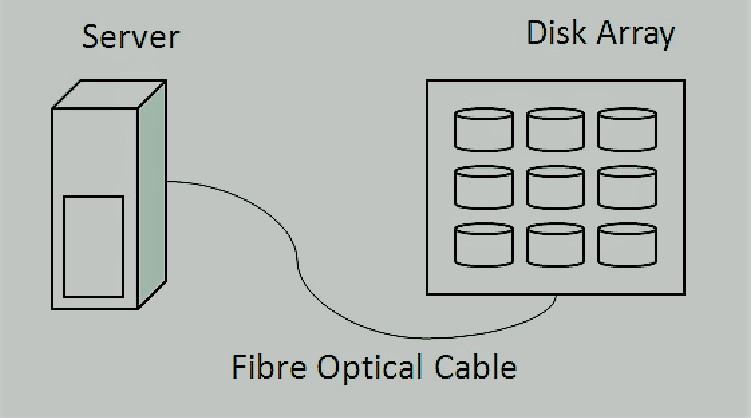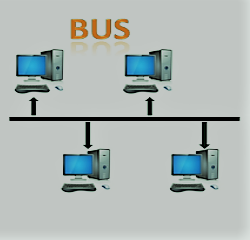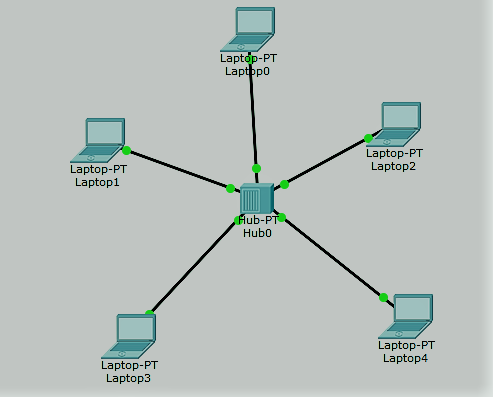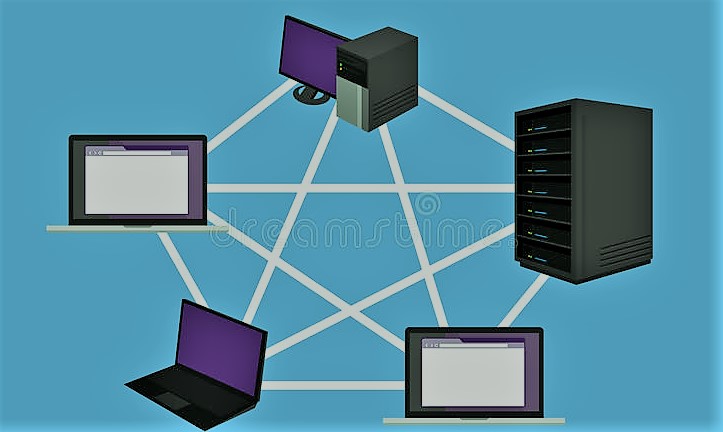Topology
Topology is a structure that connects computer systems or network devices. Physical, as well as logical aspects of a network, maybe described by topologies. Logical as well as physical topologies in the same network may be the same or different.
Point-to-Point
Point-to-point networks precisely include two hosts like a device, a switch, a router, or a server that has connected back to back by means of a single cable. Mostly, one host receiving end has linked to the other and vice versa.

Logically, the hosts may provide several intermediate devices when connecting point to point. However, the end hosts do not know the underlying network and see each other as if it were actually related.
Bus Topology
Both devices share a common transmission line or cable in the case of Bus topologies. The topologies of a bus can be difficult when several hosts simultaneously transmit data. Bus topologies then use either CSMA/CD or recognize one host as a bus master to resolve the issue. It is one of the basic networking methods in which a system malfunction does not damage other systems. But if the common communication line fails, all other devices will stop working.

There is a line terminator on both ends of the shared channel. The information has sent in one direction only, and the terminator extracts the data from the line as soon as it hits the extreme end.
Star Topology
All-Star Topologies hosts have linked by point-to-point connectivity to a central node, called a hub device. Therefore, the connection between hosts and hub is points-to-point. There is a hub unit that can be:
Device with layer-1 like hub or repeater.
Kit for Layer 2 like a bridge or switch.
System layer 3 including gateway or router.

As is the case with bus topology, the hub functions as a single failure point. If the hub crashes, all hosts have not connected to all other hosts. Each contact between hosts has carried out only via the hub. Star topologies ies is not costly to connect to another host, only one cable is necessary and it’s simple to configure.
Ring Topology
Each host has connected to two other machines in ring topology to provide a circular networking system. If a host attempts to transmit or communicate a message to a non-next host, the data has sent to each intermediate host. The administrator can only require one additional cable if one host in the current structure has connected.
Each host loss causes the entire ring to collapse. Each bond in the ring is thus a point of failure. There are techniques that use an additional ring.
Mesh Topologies
A host has bound to one or more hosts in this form of topology. The topologies has hosts connected with all other host points or could have hosts connected with just a small number of hosts on a points-to-point basis.
In mesh, topology hosts have often used as a conduit for other hosts that have no point-to-point connections. Two styles of mesh technology:
Full Mesh: All hosts have connected point-to-point to all other network hosts. This requires connections n(n-1)/2 for each new host. It is among all network topologies the most stable framework.
Partially Mesh: Not all hosts bind any single host from point to point. Hosts randomly bind to each other. There is this topology where certain hosts need to be reliable.
Tree Topologies
This is the most general type of net topology currently in use, also known as Hierarchical Topology. This topology imitates expanded Star topologies and possesses Bus topologies properties.
This topology splits the network into many network tiers. The network has bifurcated into three network device types, especially in LANs. The lower part is a network link layer. The middle layer has referred to as a diffusion layer that acts as a mediator between the top and the bottom layer. The highest layer, the centre layer of the tree from which all nodes bend, is the focal point of the network.
The relation between all adjacent hosts is point-by-point. Similar to the bus topologies, the whole network suffers if the root is down, even if it is not the only failure point. Each link has seen as a fault, and failure splits the network into an unattainable section.
Hybrid Topology
Hybrid topology has said to be a network system. That has many topologies in its architecture. Hybrid topology is the legacy and demerit of all the topologies.
The image above describes a hybrid topology randomly. The combined topologies can be Star, Ring, Bus, and Daisy topology attributes. Much of the WANs have linked via the topology of the dual ring, with Star-Topology networks mostly connected. The Internet is the most extensive example of hybrid topology.
